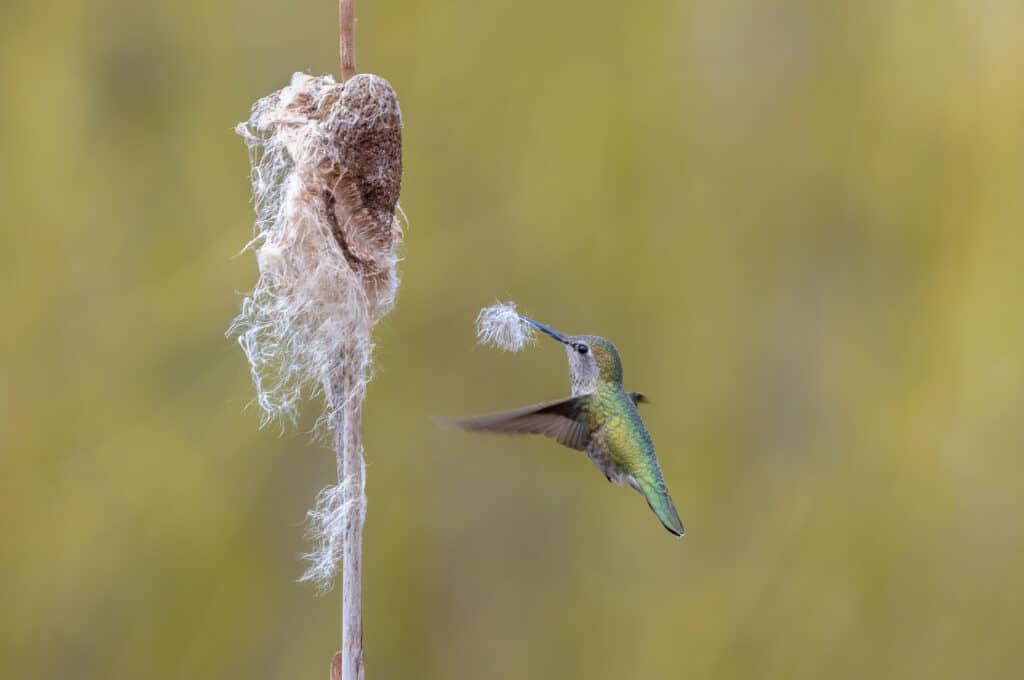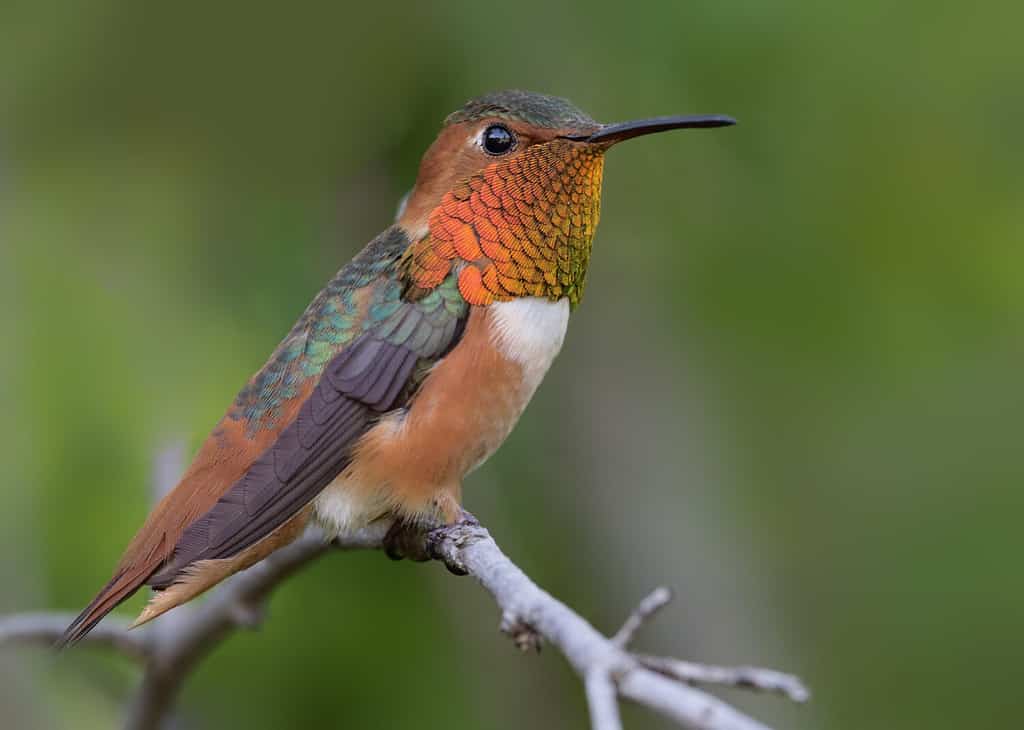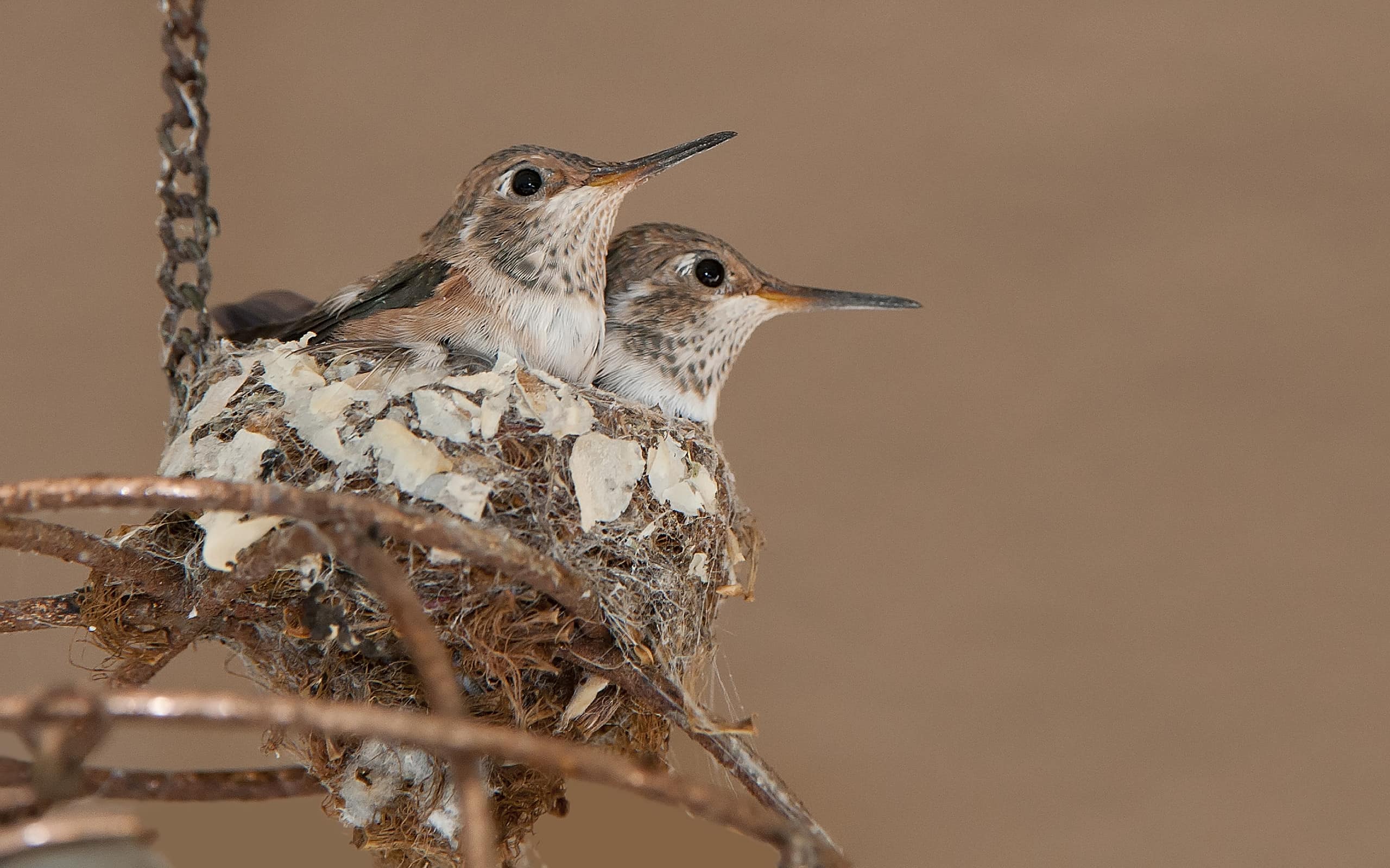Hummingbirds are a very common sight in California, where many flowers provide them with plenty of food. However, most hummingbirds don’t stay in California the whole year. Instead, they migrate. Keep reading to discover when hummingbirds leave California.
Hummingbirds must migrate because most species rely on flowers, and most areas of California do not have flowers blooming continuously throughout the year. Therefore, they have to head to warmer weather where flowers are available.
Below, we’ll discuss exactly where these birds go and when they depart California.
When Hummingbirds Leave California?
Hummingbirds typically leave California in late summer to early fall. Usually, this falls in August or September, but the exact date depends on the species and individual. This timing coincides with the changing seasons, which indicates that the flowers will soon dry up.
Some hummingbirds may depart sooner than others, while others may leave later. While we are still learning about hummingbird migration, timing appears to be caused by a mixture of genetics and weather conditions.
In all likelihood, it is the diminishing daylight hours that tell hummingbirds it is time to migrate. However, hummingbirds still appreciate clear weather when migrating. Therefore, they may leave later if it is particularly rainy in their area.
An early frost or other event may accelerate migration, as the hummingbirds may move on quickly to look for food.
Food availability likely plays some role. If there is less food for one reason or another, hummingbirds may leave sooner. If they are being fed by a reliable sugar water feeder, they may leave later. Many species will supplement their diet with insects, so the availability of insects may also play a role.
Departure Timing By Species
As we discussed, each species leaves California at a slightly different time. Here is a quick breakdown of when some common species migrate out of California:
- Rufous Hummingbird: These birds are often the earlier to depart, leaving in late summer, around August.
- Anna’s Hummingbird: Some individuals of this species do not migrate out of California at all. However, others may migrate during the fall, depending on local conditions. If the weather is milder, they are much more likely to stay put.
- Black-chinned Hummingbirds: Usually, these birds migrate in late summer, around September.
- Allen’s Hummingbird: Some Allen’s Hummingbirds are residents, while others migrate. The exact area does matter, as birds along the coast usually experience milder weather and are less likely to migrate.
Where Do They Go?
Hummingbirds often go into Central and South America when migrating out of California. The “Pacific Flyway” is the most popular route that birds use to migrate when they live in California. This route runs along the western coast of North America, extending from Alaska to South America.
Birds will typically top and refuel several times along their route. Therefore, in migration season, you may still see birds at your feeders into the fall. Usually, these are birds migrating from further north and passing through your area.
Coastal areas often serve as important stopover points, as they tend to have lots of blooming flowers later into the year.
The Sierra Nevada Mountains in eastern California serve as an important migratory area for hummingbirds, too. These mountains are a natural barrier, so many hummingbirds must move around them as they go south. Furthermore, some birds love the montane meadows in this area.
Most hummingbirds from California will end up in Mexico for the winter. This country has a suitable climate and many nectar-rich flowers and insects, making it a great spot for birds to stop in. However, some species may continue even further into Central America.
In some cases, countries like Guatemala, Honduras, and Costa Rica also provide a winter home for hummingbirds. They supply a year-round supply of nectar and insects.
As you might imagine, hummingbirds have to travel many miles to make it to California. Some species travel an astonishing 2,000 miles from their breeding grounds in the eastern United States. Their endurance and navigational skills are exceptional.
There are many challenges these birds face while migrating, too. For instance, extreme weather conditions can force them to stop in areas with little food or knock them off course substantially. Predation can also be a threat for many birds.
Exhaustion and starvation are constant threats, as hummingbirds rely on the food available along their route to make it. Conservation along these migration corridors is vital for their health.
Hummingbird Species in California
California is home to several hummingbird species, each with its unique characteristics and behaviors.
Anna’s Hummingbird

A female Anna’s Hummingbird is collecting nesting material.
©Devonyu /Shutterstock.com
This species is the most common in California. They’re known for their iridescent green feathers and vibrant magenta-red throats. They are sometimes year-round residents, while others migrate within the state.
They are very adaptable and can live in a variety of places, including urban gardens and parks.
These birds are particularly resilient to colder temperatures, allowing them to avoid migrating in many places. They will shelter in urban gardens and similar areas to survive the winter months.
Allen’s Hummingbird

Allen’s Hummingbird is one of the most common species in California.
©Angel DiBilio/Shutterstock.com
This species is visually similar to Rufous Hummingbirds. They have a fiery orange-red throat and are found commonly throughout California, especially along the coast. Many of these birds migrate into Mexico and Baja California.
Often, these birds are seen in urban areas. They aren’t always migratory, as there are both migratory and non-migratory populations. If you’re along the coast, you may see these birds year-round.
Rufous Hummingbird
These birds are vibrant orange-red and are found throughout North America. They often breed in the western portion of North America, including California. Then, they migrate across the Pacific Flyway.
Black-Chinned Hummingbird
These hummingbirds are found throughout California. They are relatively small and have a black throat patch, making them pretty easy to identify. Their iridescent green plumage is pretty recognizable, as well.
Often, these birds migrate into Mexico or even down into Central America during the winter.
Helping Migrating Hummingbirds
The easiest way to help hummingbirds is to provide food. Migrating birds expend lots of energy and need reliable food along their route. Home gardens can play a crucial role in feeding hummingbirds as they move through the area.
Try to plant native flowers that bloom at a range of different times. Some native California plants that hummingbirds love include California fuchsia (Epilobium canum), salvia species (Salvia spp.), and hummingbird sage (Salvia spathacea).
Plant several different flower types so that they aren’t all blooming at once. This helps ensure that there is always food available for passing hummingbirds. Some should be blooming when hummingbirds leave California, and then they should continue blooming through the beginning of fall.
Color matters, as hummingbirds are attracted to bright colors, like shades of red, orange, and pink. You can choose colorful flowers to naturally call in hummingbirds, or you can select brightly colored yard decorations to help call hummingbirds in from further away.
You can also provide feeders. However, if you do this, be sure to keep them full and clean them regularly. You only need to use four parts water and one part sugar to make the solution – not any food coloring or other additives.
Hummingbirds will come to rely on these feeders, so it is vital that they are always available and full.
You can also provide hummingbirds with safe places to rest and perch. Provide shrubs and trees where they can rest near a food source as they prepare for the next stage of their journey.
Minimize the use of pesticides, as these may harm hummingbirds and their food source (insects). Instead, you should try natural pest control methods, such as companion planting, to control bugs in your garden.
Plus, attracting more hummingbirds may decrease the overall number of insects, as they will consume bugs for food.
Thank you for reading! Have some feedback for us? Contact the AZ Animals editorial team.








